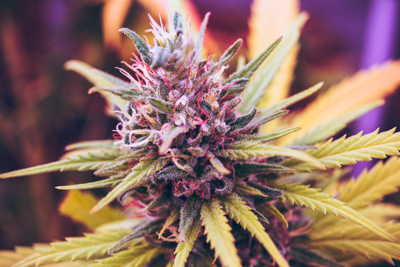Looking to improve your analytical testing of pesticides in cannabis? If so, why not register for the upcoming 'Analytical Testing Strategies for Medical Use Cannabis' eSeminar...
 Trace level pesticide analysis is difficult for cannabis plant material, which is complex and contains high levels of cannabinoids. The variety of cannabis related products also complicates testing. Most methods borrowed from related industries do not effectively address the complexity and high level of coextracted cannabinoids. To help address some of these analytical issues, Separation Science has developed a series of presentations covering best practice, methods and applications in cannabis analysis.
Trace level pesticide analysis is difficult for cannabis plant material, which is complex and contains high levels of cannabinoids. The variety of cannabis related products also complicates testing. Most methods borrowed from related industries do not effectively address the complexity and high level of coextracted cannabinoids. To help address some of these analytical issues, Separation Science has developed a series of presentations covering best practice, methods and applications in cannabis analysis.
In this event Julie Kowalski (Trace Analytics) will give a presentation outlining the difficulty of trace level analysis with data demonstrating the complexity and impact to data quality, specifically ion suppression for electrospray ionization LC-MS/MS, of samples prepared by popular sample preparation methods. The magnitude of matrix effects and the feasibility of “dilute and shoot” will be shown. Coextracted cannabinoids are identified as causing the most severe ion suppression so they were targeted for removal during sample clean-up. In addition, chlorophyll removal was also considered during method development because it can increase instrument fouling. Sample preparation strategies with respect to coextractives removal and with specific attention to removal of cannabinoids will be discussed. In addition, pesticide recovery determined by LC-MS/MS will be shown.
 Julie Kowalski is the Director of Science and Research at Trace Analytics. She earned her graduate degree in Analytical Chemistry from Pennsylvania State University. Her professional experience includes troubleshooting and method development for GC, GC-MS, GCxGC, LC, and LC-MS/MS in addition to pesticide residue analysis and chromatography method development. She has previously served as the President of the North American Chemical Residue Workshop and served on two AOAC Expert Review Panels
Julie Kowalski is the Director of Science and Research at Trace Analytics. She earned her graduate degree in Analytical Chemistry from Pennsylvania State University. Her professional experience includes troubleshooting and method development for GC, GC-MS, GCxGC, LC, and LC-MS/MS in addition to pesticide residue analysis and chromatography method development. She has previously served as the President of the North American Chemical Residue Workshop and served on two AOAC Expert Review Panels
Attendees will be presented with data outlining the major issues with trace level pesticide analysis is cannabis plant material. Ion suppression will be detailed. Sample preparation strategies will be discussed as part of an ongoing effort to improve and customize sample clean-up for cannabis flower.




